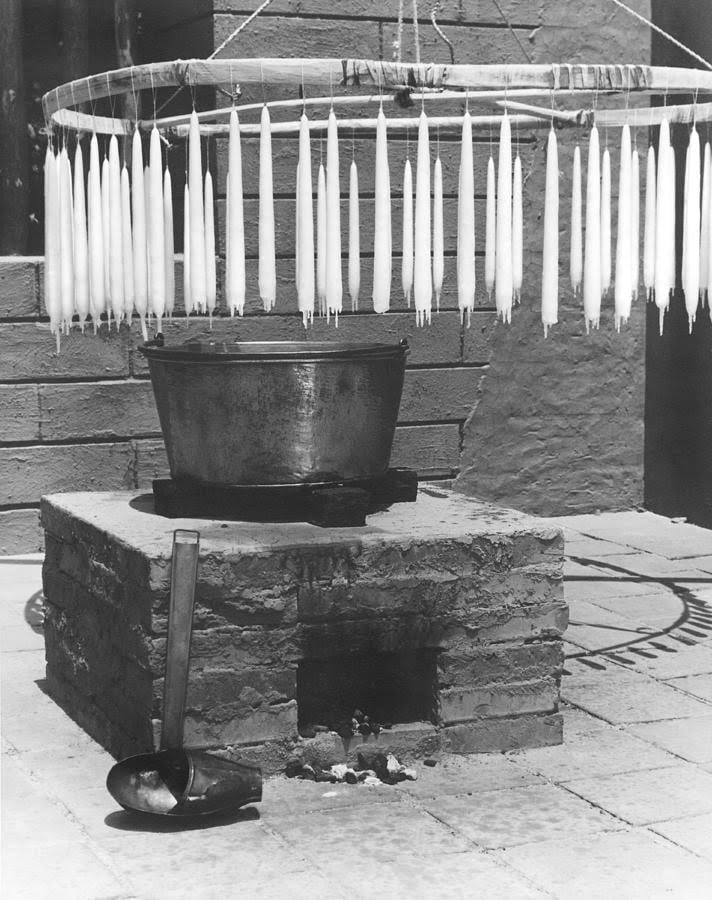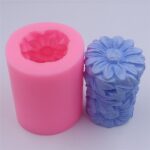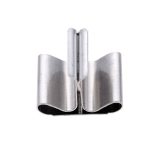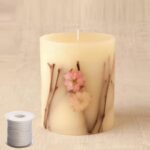Are you an avid candle maker looking to create the perfect candle? One of the most important factors in achieving a high-quality, well-burning candle is the size of the wick.
In this article, we will explore the essential role that wick size plays in candle making and how it can impact the overall performance of your candles. Understanding how to choose the right wick size and how to test and adjust it for optimal burn is crucial for creating the perfect candle every time.
When it comes to crafting candles, choosing the appropriate wick size is key to ensuring that your candles burn evenly and effectively. The correct wick size can make all the difference in achieving a clean burn with minimal soot and smoking.
Additionally, using the wrong wick size can result in poor performance and even safety hazards. With various wick sizes available on the market, it’s important to understand how to select the right one for your specific candle-making needs.
In this comprehensive guide, we will delve into everything you need to know about candle making wick size. From understanding its importance in candle making to selecting the right wick size for different types of candles, we will cover all aspects of this critical component in candle making. Whether you’re a beginner or an experienced chandler, mastering the art of selecting and testing wick sizes will ultimately lead you to creating beautiful, high-quality candles that everyone will love.
Understanding the Importance of Wick Size in Candle Making
When it comes to candle making, the size of the wick plays a crucial role in the overall quality and performance of the finished product. The wick size directly impacts the way the candle burns, including factors such as burn time, flame height, and even wax consumption. Understanding the importance of wick size in candle making is essential for achieving the perfect candle.
Efficiency and Burn Time
One of the primary reasons why wick size is important in candle making is its impact on efficiency and burn time. A wick that is too small may not be able to sufficiently melt and pool the wax, leading to tunneling and a shorter burn time. On the other hand, a wick that is too large may create a larger flame than necessary, resulting in faster wax consumption and a shorter overall burn time.
Flame Height and Sooting
Another critical aspect affected by wick size is flame height and sooting. A wick that is too small may produce a weak flame that struggles to stay lit, while a wick that is too large can create a tall flame that flickers excessively and produces soot. Soot not only detracts from the aesthetic appeal of the candle but can also create potential health hazards when burned indoors.
Fragrance Throw
The size of the wick also impacts fragrance throw – how well the candle releases its scent when burned. A properly sized wick will help distribute fragrance evenly throughout the space, creating a pleasant aroma experience for anyone nearby. If the wick size is incorrect, however, it can lead to an uneven or weak fragrance throw, affecting the overall effectiveness of scented candles.
Understanding these various aspects underscores why selecting the right wick size for your candle making projects is crucial for achieving optimal burn performance and overall customer satisfaction with your finished products.
How to Choose the Right Wick Size for Your Candle
Choosing the right wick size for your candle is crucial in ensuring a successful and high-quality candle-making process. The wick size directly impacts how the candle burns, including the flame’s height, the wax’s consumption rate, and the overall performance of the candle. With various wick sizes available in the market, it’s important to understand how to choose the right one for your specific candle-making project.
Consider Your Wax Type
The type of wax you use plays a significant role in determining the appropriate wick size. Different waxes have different melting points and compositions, which can affect how they interact with a particular wick size. For example, soy wax may require a different wick size than paraffin wax due to their different burning characteristics.
Understand Your Candle Size and Shape
The dimensions and shape of your candle also influence the selection of the right wick size. A larger or wider candle will require a thicker and possibly longer wick to ensure an even burn throughout. Similarly, tapered or uniquely shaped candles may need specialized wicks to accommodate their design.
Factor in Fragrance Oils and Additives
If you plan to add fragrance oils or other additives to your candles, it’s essential to consider their impact on wick performance. Some fragrances or additives may alter the burning properties of the wax, necessitating a different wick size than what would typically be used for that particular type of wax.
By taking into account these considerations when choosing a wick size for your candle-making project, you can improve your chances of creating high-quality candles with optimal burning characteristics and performance. Remember that testing different wick sizes before settling on one is key to achieving the perfect result.
Common Wick Sizes and Their Suitable Candle Types
When it comes to candle making, choosing the right wick size is crucial in ensuring that your candles burn properly and evenly. The size of the wick determines how much fuel can be drawn up to the flame, affecting the quality of the burn and the overall performance of the candle. It’s important to understand the different wick sizes available and their suitability for various types of candles.
Here are some common wick sizes and the types of candles they are best suited for:
- Small (Votive) – Small wicks are perfect for votive candles, which are small, cylindrical candles typically placed in a decorative container.
- Medium (Container) – Medium-sized wicks work well for container candles, which are poured into containers such as jars or tins.
- Large (Pillar) – Large wicks are ideal for pillar candles, which are freestanding candles that do not require a container for support.
It’s important to note that these are general guidelines, and finding the right wick size may require some experimentation and testing with different types of wax and fragrance oils. Additionally, factors such as the diameter of the candle, type of wax used, and presence of additives can also impact the choice of wick size.
Ultimately, selecting the correct wick size ensures that your candle burns cleanly and evenly, providing a satisfying experience for those who enjoy its warm glow and pleasant aroma.
Testing Wicks: Choosing the Right Wick Size
In order to achieve optimal burn performance in your candle making endeavors it is key to pick a suitable sized wick through tests. To read further on why choosing correct sized bases is important in successful selling practices look into a buyers guide filled with tips on how to efficiently choose an appropriate sized base off Etsy.
Testing and Adjusting Wick Size for Optimal Burn
When it comes to candle making, the size of the wick plays a critical role in achieving an optimal burn. The right wick size ensures that your candle burns evenly, efficiently, and safely. However, determining the appropriate wick size for your specific candle can be a trial-and-error process that requires testing and adjustment.
To begin testing the wick size for your candle, start by choosing several different wicks that are suitable for the type of wax and container you are using. This will allow you to compare their performance and determine which one is best suited for your needs. Once you have selected the potential wick sizes, it’s time to conduct burn tests.
During the burn test, you will observe how each wick performs in terms of flame size, wax pool size, and overall burn quality. Keep notes on each wick’s performance, including any issues such as tunneling or soot buildup. After completing the burn tests, you can then make adjustments to the wick size if necessary.
Adjusting the wick size may involve selecting a larger or smaller diameter or changing the type of wick altogether. It’s important to carefully monitor each adjustment and continue conducting burn tests until you achieve an optimal burn with a consistent flame and minimal residue. By taking the time to test and adjust the wick size for your candles, you can ensure that they will perform at their best when lit.
| Wick Size | Suitable Candle Types |
|---|---|
| Small | Tea lights |
| Medium | Jar candles |
| Large | Pillar candles |
Effects of Incorrect Wick Size on Candle Performance
When it comes to candle making, selecting the right wick size is crucial in ensuring optimal candle performance. The size of the wick determines how the wax will be consumed and how the flame will burn, ultimately affecting the overall quality of the candle. Using an incorrect wick size can result in various issues that affect the candle’s appearance, scent throw, and burning time.
One of the most common effects of using an incorrect wick size is tunneling. Tunneling occurs when a candle burns straight down the middle, leaving wax along the sides of the container.
This happens when a wick that is too small is unable to melt the wax evenly across the entire diameter of the container. On the other hand, using a wick that is too large can lead to excessive mushrooming or soot buildup, causing a decrease in fragrance throw and an unpleasant burning experience.
Another consequence of using an incorrect wick size is uneven burning. A wick that is too small may not generate enough heat to reach all areas of the container, resulting in uneven melting and potential wastage of wax. Conversely, a wick that is too large can produce excessive heat, leading to an uneven burn and possibly causing safety hazards such as overheating or cracking of the container.
It’s important for candle makers to understand how different wick sizes impact their candles and to conduct thorough testing to determine the best fit for their specific wax blend, fragrance load, and container type. By choosing the right wick size based on these factors, candle makers can ensure that their candles burn evenly, emit a strong fragrance throw, and provide a satisfying experience for their customers.
| Effects of Incorrect Wick Size | Consequences |
|---|---|
| Tunneling | Uneven burning causing wasted wax or soot buildup |
| Uneven Burning | Potential safety hazards like overheating or cracking containers |
Tips for Troubleshooting Wick Size Issues
When it comes to candle making, choosing the right wick size is crucial for achieving the perfect burn and scent throw. However, even with careful consideration, issues may arise that can impact the performance of your candles. Here are some tips for troubleshooting wick size issues:
- Check Your Wick Size: If you notice that your candle is burning too quickly or not creating a full melt pool, it could be an indication that the wick size is incorrect. Ensure that you are using the recommended wick size for the type and size of candle you are making.
- Observe Flame Behavior: Pay attention to how the flame behaves when the candle is lit. If the flame is too small or too large, it may be a sign that the wick size needs to be adjusted. A properly sized wick should create a steady and even flame.
- Examine Soot Build-Up: An incorrectly sized wick can also lead to excessive soot build-up on the container or around the flame. If you notice black residue accumulating, consider trying a different wick size to see if it resolves the issue.
Testing and adjusting wick size may require some trial and error, but it’s an essential step in achieving optimal candle performance. Keep in mind that factors such as fragrance load, wax type, and container material can also impact how a particular wick size performs in a candle.
Remember that troubleshooting wick size issues is an important part of the candle making process. By being attentive to factors such as flame behavior and burn performance, you can make necessary adjustments to ensure that your candles achieve their full potential in terms of burn time and fragrance throw.
Conclusion
Choosing the right wick size is crucial in achieving the perfect candle. The proper wick size can ensure an optimal burn, prevent tunneling, and reduce soot and smoke. It also plays a significant role in the overall performance of the candle, including its scent throw and aesthetic appeal.
When selecting the wick size for your candle, it is important to consider factors such as the type of wax, fragrance load, diameter of the container, and desired burn time. Testing and adjusting the wick size before finalizing your candle recipe is essential to ensure that it burns cleanly and evenly.
In addition to understanding the significance of using the correct wick size, it is equally important to troubleshoot any issues that may arise during the candle making process. Keeping track of your testing results and being open to making adjustments will help you achieve consistency in your candle production. With proper care in selecting, testing, and adjusting the wick size, you can create high-quality candles that meet both your standards and those of your customers.
Frequently Asked Questions
What Size Wick to Use in Candle Making?
The size of the wick to use in candle making depends on the diameter of the candle. Generally, a larger candle will require a thicker wick to ensure an even burn, while a smaller candle may need a thinner wick.
Does the Size of the Wick Make a Difference in How the Candle Burns?
Yes, the size of the wick does make a difference in how the candle burns. If the wick is too small, it may not be able to create a large enough flame to melt the wax evenly. On the other hand, if the wick is too big, it can cause excessive smoking and uneven burning.
How Do You Know if the Wick Is Too Big?
One way to know if the wick is too big is if it creates a large, flickering flame that becomes sooty or smoky. This indicates that the wick is not able to efficiently burn off all of the wax being drawn up.
Additionally, if the candle wax melts unevenly or pools around the wick, this could also be a sign that the wick is too large for the candle size.

Welcome to my candle making blog! In this blog, I will be sharing my tips and tricks for making candles. I will also be sharing some of my favorite recipes.





